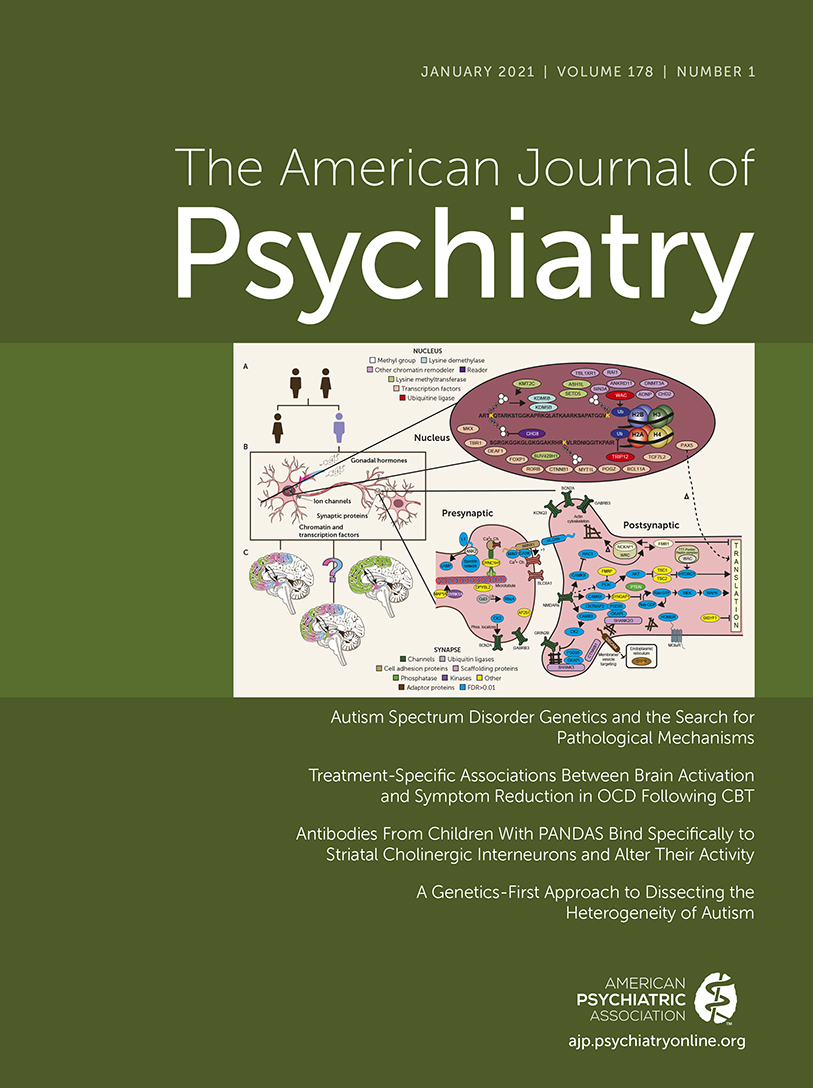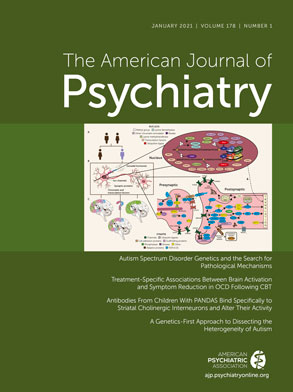T
o the E
ditor: The Clinical Case Conference by Suri et al. (
1), published in the March 2020 issue of the
Journal, while generally appropriate in its thrust, does not detail important changes in research, international law, and practice that have occurred regarding the use of valproate in women of childbearing age. Indeed, expert consensus within the reproductive psychiatry community holds that using valproate as one of many options is no longer considered a reasonable choice unless it is the only option for treating severe illness. This is an important point that both residents in training and more experienced general psychiatrists should be made aware of, but it has been slow to be adopted outside of reproductive psychiatry experts.
Regarding research, Suri et al. do point out valproate’s association with increased risks of fetal malformations, such as neural tube defects, developmental delay, and autism. However, the authors should also have mentioned that exposure to valproate in utero has been associated with increased risk in children for lower IQ, attention deficit hyperactivity disorder, and behavioral problems, outcomes that suggest valproate’s risk extends beyond the first trimester of pregnancy (
2–
4). Furthermore, valproate is associated with increased risk in women for polycystic ovary syndrome, hyperandrogenism, and menstrual cycle irregularities, which are risk factors for fertility problems and cardiovascular disease that women should be warned about (
5).
Significant changes in international law are also pertinent. Although discordance in the use of medications in different countries may be expected, there has been a clear trend toward laws restricting the use of valproate. Building on warnings issued in 2014, the Coordination Group for Mutual Recognition and Decentralized Procedures–Human, a European Union regulatory body, published a 2018 position, legally binding across 28 countries, stating that valproate in women and girls “should never be started unless alternative treatments are not suitable,” that valproate is “contraindicated” in women of childbearing age unless pregnancy prevention provisions are met, and that the use of valproate is banned in pregnancy except for women with epilepsy for whom no alternative treatment is available (
6). Although this position makes an arguably unfair distinction between epilepsy and bipolar disorder and has no jurisdiction in the United States, it is important for clinicians to be aware of the developing legal landscape.
Finally, reproductive psychiatry has shifted away from considering valproate as a “reasonable alternative” in women of reproductive age and toward viewing valproate as a last resort, not justifiable unless it is the only option for treating severe illness. Following expert practice, physicians choosing to prescribe valproate to women of reproductive potential would be wise to document:
•
Why there are no acceptable alternatives to valproate for a particular patient;
•
The use of a highly reliable method of birth control;
•
Discussion of valproate’s risks for both the patient and fetus; and
•
The recommendation to take 4 mg of folic acid daily to reduce the risks of congenital malformations in an unplanned pregnancy (
7).
Given emerging research, international laws banning the use of valproate, and a changing standard of care that considers valproate a last resort in reproductive-age women, the doctors’ decision in Suri’s clinical case to treat with valproate instead of other options, such as lithium, may look less reasonable in years to come.

